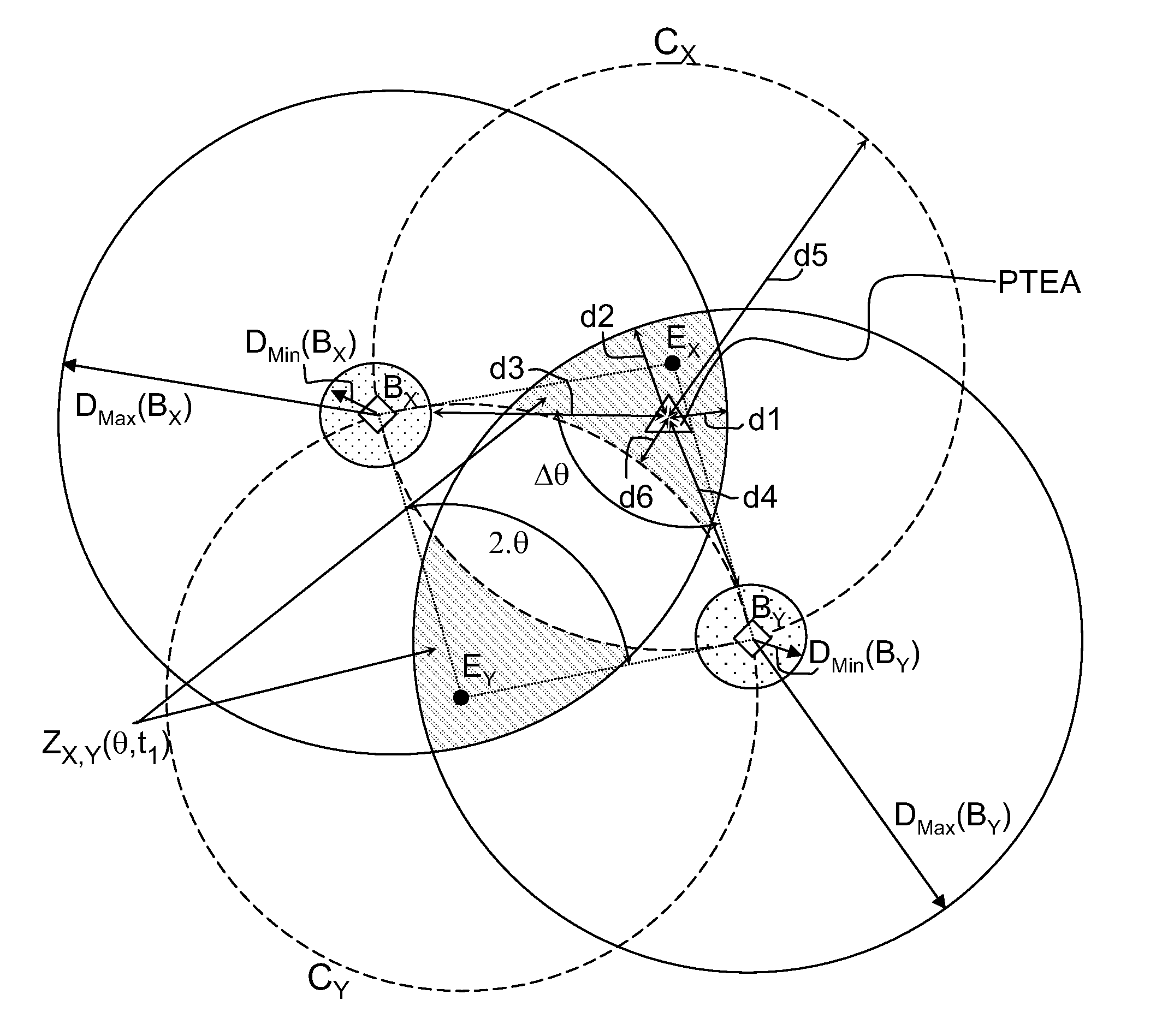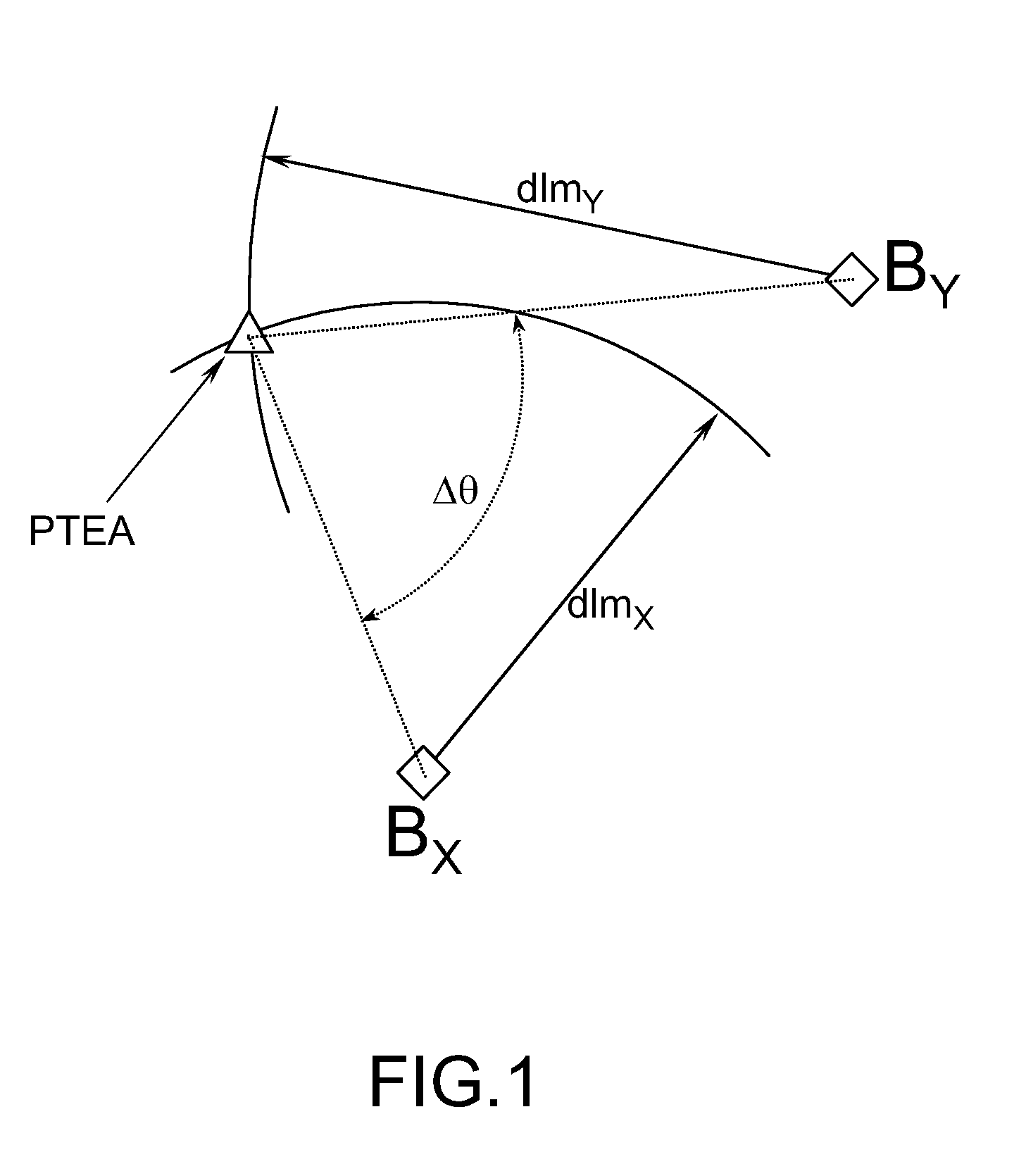Method for automatically selecting radionavigation beacons
a radionavigation beacon and automatic selection technology, applied in the direction of direction finders, instruments, measurement devices, etc., can solve the problems of reducing the availability of the estimation of the 2d terrestrial position of the aircraft, prohibitive size of the initialization period, and modifying the selection pair of beacons, so as to reduce the drawback
- Summary
- Abstract
- Description
- Claims
- Application Information
AI Technical Summary
Benefits of technology
Problems solved by technology
Method used
Image
Examples
first embodiment
[0037]In the method for selecting beacons, it is possible to consider that the criterion for selecting a pair of beacons can be expressed as selecting a pair of beacons (BX, BY) with a view to maximizing the duration necessary for the aircraft to exit the employment zone ZX,Y(θ, t1), a speed of the aircraft being given. This criterion can also be expressed in distance terms, in this case one seeks to maximize the distance separating the 2D terrestrial position of the aircraft from the boundaries of the employment zone ZX,Y (θ, t1).
[0038]Accordingly, one seeks to express, at an instant t1, DX,Y (θ, t1) the shortest distance separating the 2D terrestrial position of the aircraft A(t1) taken at the instant t1 from the boundaries of the employment zone ZX,Y (θ, t1), θ being fixed. This search is done on the basis of the knowledge of A(t1) and of the 2D terrestrial positions of the beacons stored in the database onboard the aircraft, it is carried out independently of the searches done o...
second embodiment
[0046]In the method for selecting beacons, the selection of the pair of beacons is carried out on the basis of assumptions on the 2D terrestrial position taken by the aircraft in the instants following t1. This embodiment leads to the evaluation, for each possible employment zone, defined by a pair of beacons from among the eligible beacons and a value of an angle θ, of the duration required for the 2D terrestrial position of the aircraft to exit the zone of employment of the relevant pair of selected beacons. Various assumptions about the predefined trajectory of the aircraft can be envisaged:
[0047]Advantageously, the predefined trajectory consists in prolonging the motion of the aircraft at the instant t1 by a uniform rectilinear motion.
[0048]Advantageously, the predefined trajectory is determined on the basis of data featuring in a flight plan onboard the aircraft.
[0049]The two embodiments of the method make it possible to evaluate, for each pair of beacons, the duration on compl...
PUM
 Login to View More
Login to View More Abstract
Description
Claims
Application Information
 Login to View More
Login to View More - R&D
- Intellectual Property
- Life Sciences
- Materials
- Tech Scout
- Unparalleled Data Quality
- Higher Quality Content
- 60% Fewer Hallucinations
Browse by: Latest US Patents, China's latest patents, Technical Efficacy Thesaurus, Application Domain, Technology Topic, Popular Technical Reports.
© 2025 PatSnap. All rights reserved.Legal|Privacy policy|Modern Slavery Act Transparency Statement|Sitemap|About US| Contact US: help@patsnap.com



